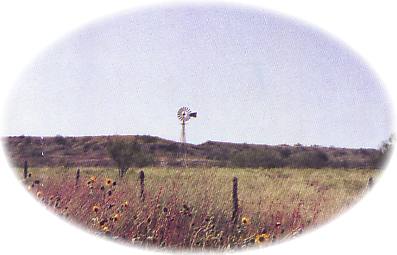Greer County, OK
 The "empire" of Greer, in the extreme southwest corner of Oklahoma, has a history distinctly its own. Greer County, before statehood in 1907, contained 1,571,575 acres and was larger than the State of Delaware. It consisted of the present counties of Greer, Jackson, Harmon, and the southern half of Beckham.
The "empire" of Greer, in the extreme southwest corner of Oklahoma, has a history distinctly its own. Greer County, before statehood in 1907, contained 1,571,575 acres and was larger than the State of Delaware. It consisted of the present counties of Greer, Jackson, Harmon, and the southern half of Beckham.On February 8, 1860, Governor Sam Houston approved an act of the Texas legislature creating the County of Greer from the area of Young County, Texas and named for John Alexander Greer, a veteran of the Texas war for independence from Mexico. Civil War intervened for a while. Under Texas jurisdiction the county was attached successively to different organized counties until Greer was organized with a full slate of officers July 10, 1886. For almost 10 years, the county carried on a de facto government under the jurisdiction of the State of Texas.
Greer County was part of a long-standing boundary dispute between the United States and the State of Texas. Greer County passed from Texas to Oklahoma authorities in 1896 at the decision of the United States Supreme Court. Greer County celebrated the Centennial of this decision March 16, 1996.
Shortly after the Civil War and along in the seventies a railway was built out to Abilene and Dodge City, Kansas. Many cattlemen of North and Central Texas in the spring of the year would start to drive their cattle to market. They could only make three or four miles a day, for the reason the cattle had to eat along the way. Cowboys would ride ahead and undertake to find a creek, river or some watering place for the cattle. If the drive was especially hard one day the cattlemen would let their cattle rest a day or so and not drive very far. Their object was: To have the cattle good and fat when they reached a railway shipping point in the fall of the year.
Along in the late seventies, a few cowboys were especially impressed with the good, tall grass in what is now Mangum, Oklahoma. They would let the poor and sick cattle remain. They were not physically able to make the long trek to Kansas. At times some of the cowboys would stay with the cattle. They would dig a hole in the ground, commonly called dugout and remain here. Soon great ranches were established in what is now Greer County, Oklahoma.
The brand of one large cattle company was "J" and then a buckle. This outfit became known as the JayBuckle. They selected a young man by the name of Samuel Houston Tittle as their foreman, and he kept the cattle near a spring four miles north of the present town of Reed. This spring is known today as J Buckle spring. Mr. Tittle of Granite, Oklahoma, was sheriff of this county a number of years, and the father of Louis Tittle, a Mangum businessman.
Explore Greer County
Greer County Cemeteries
A detailed listing and accompanying photos of some of the headstones can be viewed at these informative websites.
Old Pioneer Hall of Fame
On the grounds of the Museum is the Old Pioneer Hall of Fame to honor the Pioneers who were in this area before 1907. Their picture and history are carved in Pink Granite stone and is unique, as there is none other like it in this country. By 1986, there were 160
Mangum, OK Halls of FameGreer County Courthouse
The historic Greer County courthouse is truly the center of town and the center of activity. The entire square is surrounded by a unique WPA stone wall with corner fountain structures. In the front lawn is a granite plaque with a brief history of the struggle of the Greer County "empire."
Mangum, OK Historic CourthousesMangum Library & Genealogy Center - WPA
The Native stone building was built in 1936 and was a WPA project. The stone was dug from the ground and hauled in by teams and wagons, each piece of stone was cut by hand by the laborers and put into place.
Mangum, OK Historic BuildingsMangum Golf Course
Mangum's 9-hole public golf course is the best in this part of the state boasting well kept greens and fairways. There is also a driving range available.
Mangum, OK Golf CoursesSandy Sanders Wildlife Management Area
The Sandy Sanders WMA covers 16,510 acres of Greer and Beckham counties in Southwest Oklahoma.
The habitat is rough gypsum outcroppings scattered with mesquite and Pine off Juniper trees.
Approximately 300
Mangum, OK Wildlife Areas